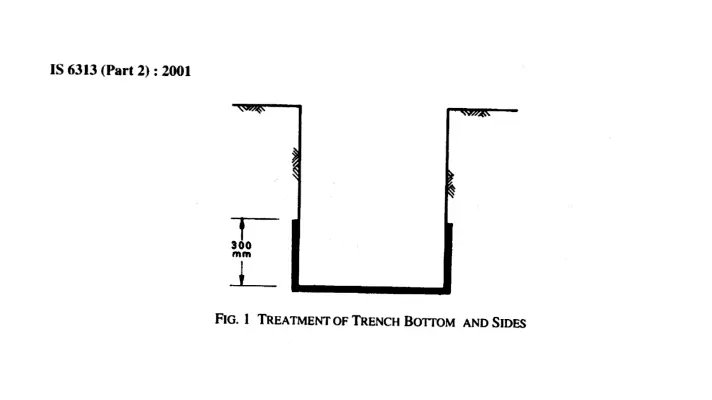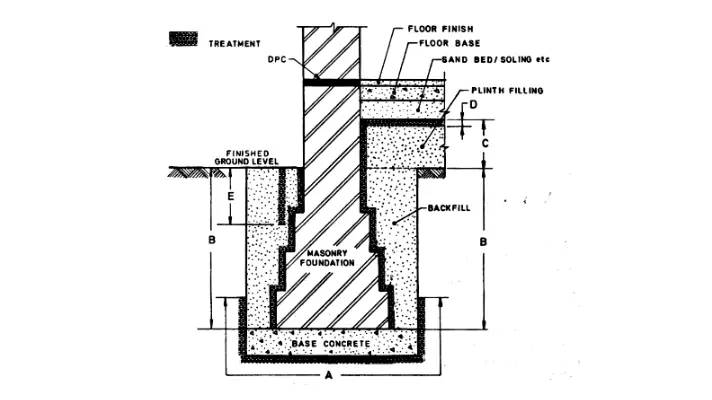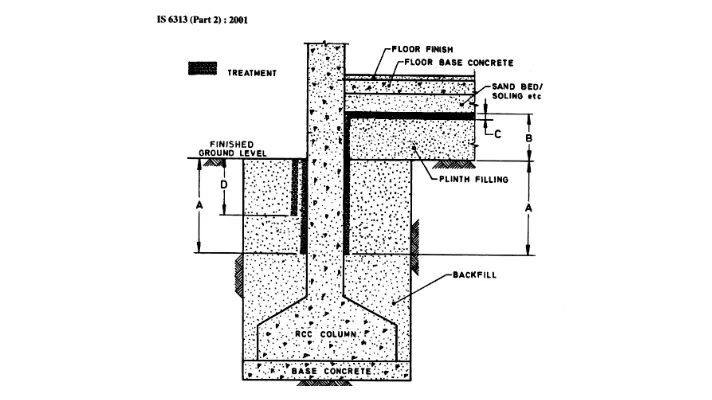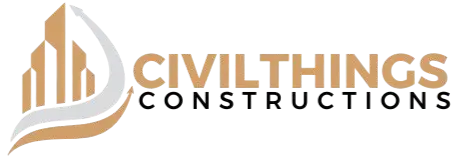Anti Termite Treatment in Building Construction (as per IS 6313 Part 2: 2020) this post helps us understand the process of Anti termite treatment on Field. In post we discussed about in detail about chemicals and how its apply.
Table of Contents
Introduction
In the realm of building construction, safeguarding structures against termite infestation is paramount to ensuring their longevity and structural integrity. The Indian Standard IS 6313 Part 2: 2020 provides detailed guidelines for anti-termite treatment, outlining various chemicals and treatment methods to combat termite damage effectively. In this comprehensive guide, we delve into the types of chemicals recommended, treatment procedures for different structural components, and essential guidelines to adhere to for successful anti-termite treatment.
Download Link
Types of Chemicals for Anti-Termite Treatment

As per IS 6313 Part 2: 2020, two main types of chemicals are commonly used for anti-termite treatment:
- A) Chlorpyrifos Emulsifiable Concentrate 20%: This chemical solution contains chlorpyrifos as the active ingredient at a concentration of 20%. Dilution with water is necessary to achieve the desired concentration for effective anti-termite treatment.
- B) Lindane Emulsifiable Concentrate 20%: Similar to chlorpyrifos, this chemical solution contains lindane as the active ingredient at a concentration of 20%. Dilution with water is essential for optimal effectiveness.
Dilution Procedure:
For chemicals with a 20% content rate, IS 6313 Part 2: 2020 specifies a specific ratio of water to chemical to achieve a one percent concentration. Specifically, one part of water should be added to one part of the chemical concentrate.
Treatment Guidelines:
Bottom Surface and Sides Treatment: Apply 5 liters of the diluted chemical solution per square meter of surface area for the bottom surface and sides of the structure, up to a height of approximately 300 mm. This treatment creates a protective barrier against termite infestation.
Treatment for Masonry Foundation (7.2.2)

The guidelines for anti-termite treatment of masonry foundations entail:
- For step footings type foundations, after excavation and backfilling, spray 5 liters of the diluted chemical solution per square meter of the soil surface before compacting.
- After backfilling, compact the soil, and then, for every 150 mm of compacted area, apply the chemical spray at 12 mm intervals. This method can be applied to various types of foundations, ensuring comprehensive termite protection for the building structure.
Anti Termite Treatment for RCC Foundation

The treatment for RCC foundations involves specific considerations:
- Due to the dense nature of concrete, traditional termite treatments may not effectively penetrate the material.
- Treatment should extend from ground level to a depth of 500 mm into the foundation.
- Treatment application on the bottom side of the foundation is unnecessary.
- A rate of 7.5 liters per square meter of chemical solution is recommended for RCC foundation surfaces.
Anti Termite Treatment for Top Surface of Plinth:
Key points for treating the top surface of the plinth include:
- Timing of treatment: After backfilling and compaction work is completed.
- Hole making process: Drill holes at regular intervals using a 12 mm rod, spaced at 150 mm apart.
- Depth of holes: Ensure holes are drilled to a depth of 50 mm to 75 mm.
- Chemical application rate: Apply 5 liters of chemical solution per square meter of the plinth surface area.
Anti Termite Treatment for Expansion Joints:
Expansion joints require specific treatment procedures:
- Clean and prepare the area before applying the chemical solution.
- Use 2 liters of the anti-termite chemical solution per expansion joint.
- Ensure penetration of the chemical solution into the joint gaps.
- Repeat application if necessary and allow sufficient drying time.
FAQ – Anti Termite Treatment
Why is anti-termite treatment necessary in building construction?
Termite infestation poses a significant threat to the structural integrity of buildings, causing extensive damage to wooden components, foundations, and other structural elements. Anti-termite treatment is essential to prevent such damage and ensure the longevity of the building.
What are the main types of chemicals used for anti-termite treatment?
As per IS 6313 Part 2: 2020, the main types of chemicals used for anti-termite treatment are Chlorpyrifos Emulsifiable Concentrate 20% and Lindane Emulsifiable Concentrate 20%. These chemicals are effective in creating a protective barrier against termite infestation.
Is anti-termite treatment necessary for RCC foundations?
Yes, anti-termite treatment is necessary for RCC foundations. However, special considerations should be taken into account due to the dense nature of concrete. Treatment should extend from ground level to a depth of 500 mm into the foundation, excluding the bottom side.
What should I do if I notice signs of termite activity after treatment?
If signs of termite activity are observed after treatment, it is advisable to consult with a professional pest control service immediately. They can assess the situation and recommend appropriate measures to address the termite infestation effectively.

Hi! I’m Sandip, a civil engineer who loves sharing about Civil Engineering & new ideas and tips. My blog helps you learn about engineering in a fun and easy way!


Comments are closed.